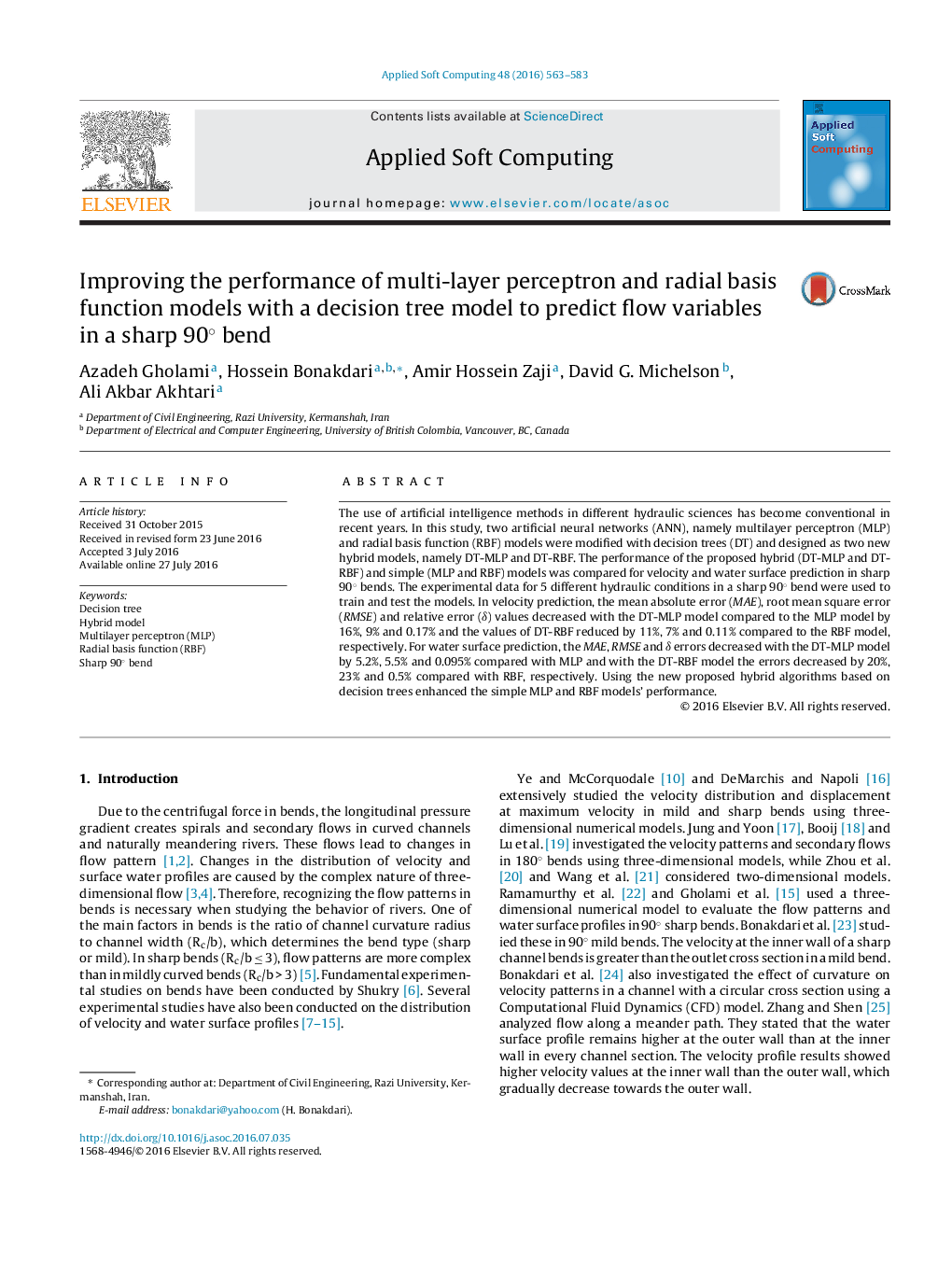| کد مقاله | کد نشریه | سال انتشار | مقاله انگلیسی | نسخه تمام متن |
|---|---|---|---|---|
| 494570 | 862799 | 2016 | 21 صفحه PDF | دانلود رایگان |
• New multilayer perceptron and radial basis function neural network methods based on decision trees (DT-MLP and DT-RBF) were introduced.
• DT-MLP and DT-RBF were used to predict velocity and free surface profiles in a 90° open channel bend.
• The error reduction with the DT-RBF model was greater than the DT-MLP model.
• The proposed models’ hybrid algorithms enhanced the simple MLP and RBF models’ performance.
The use of artificial intelligence methods in different hydraulic sciences has become conventional in recent years. In this study, two artificial neural networks (ANN), namely multilayer perceptron (MLP) and radial basis function (RBF) models were modified with decision trees (DT) and designed as two new hybrid models, namely DT-MLP and DT-RBF. The performance of the proposed hybrid (DT-MLP and DT-RBF) and simple (MLP and RBF) models was compared for velocity and water surface prediction in sharp 90° bends. The experimental data for 5 different hydraulic conditions in a sharp 90° bend were used to train and test the models. In velocity prediction, the mean absolute error (MAE), root mean square error (RMSE) and relative error (δ) values decreased with the DT-MLP model compared to the MLP model by 16%, 9% and 0.17% and the values of DT-RBF reduced by 11%, 7% and 0.11% compared to the RBF model, respectively. For water surface prediction, the MAE, RMSE and δ errors decreased with the DT-MLP model by 5.2%, 5.5% and 0.095% compared with MLP and with the DT-RBF model the errors decreased by 20%, 23% and 0.5% compared with RBF, respectively. Using the new proposed hybrid algorithms based on decision trees enhanced the simple MLP and RBF models’ performance.
Figure optionsDownload as PowerPoint slide
Journal: Applied Soft Computing - Volume 48, November 2016, Pages 563–583
